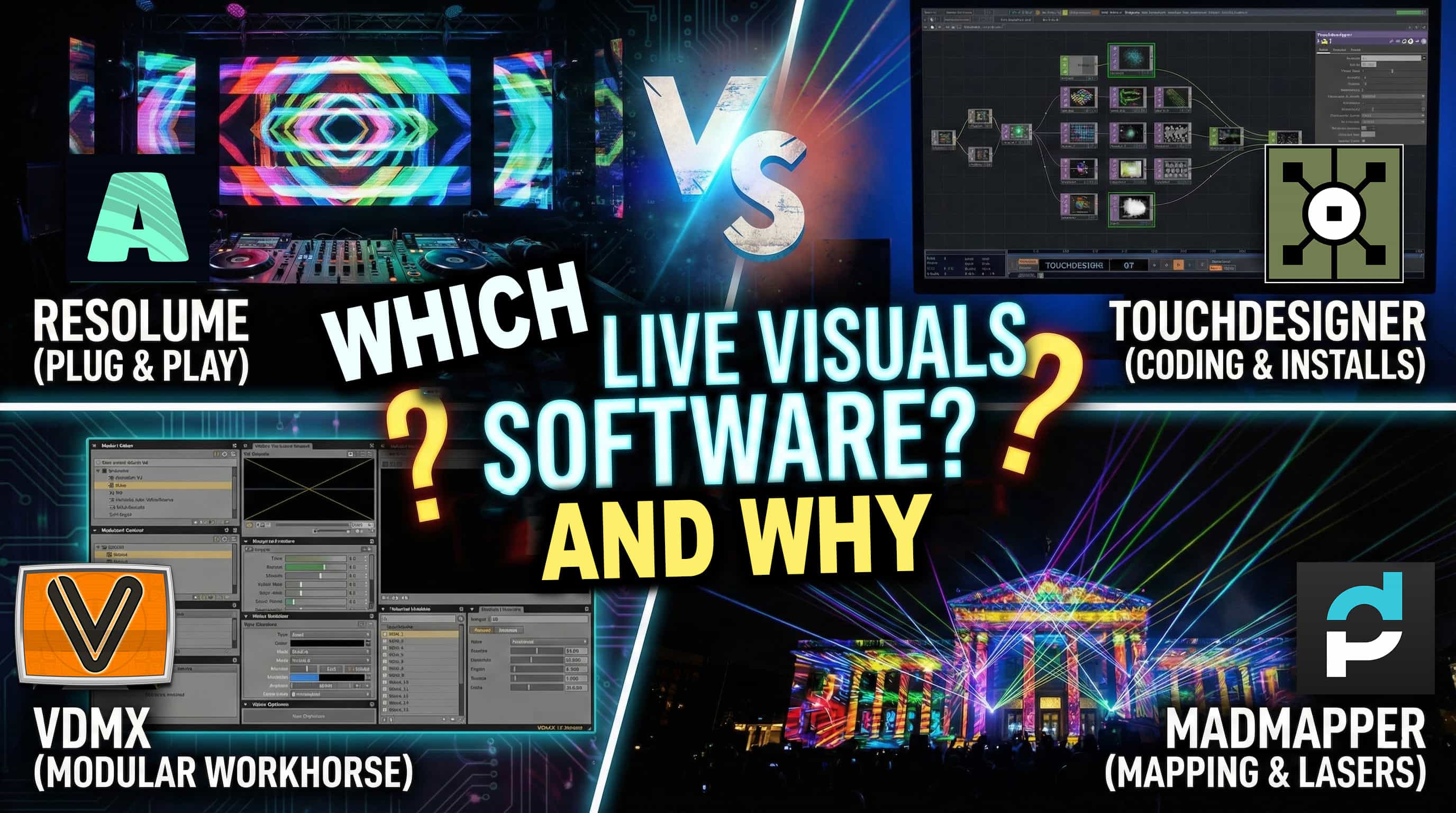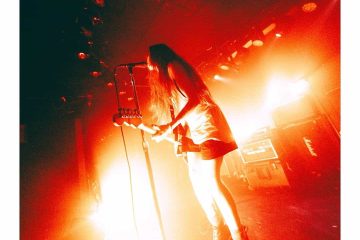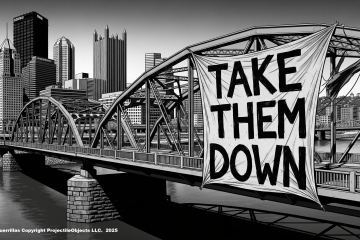In August 2020, Sam Jimenez (production/lighting designer) reached out on behalf of the Grammy nominated band Code Orange. They were planning a show unlike any other before. A new adventure, but where to start?
They wanted something immersive — larger than life.
We needed a space. The ideas were already flowing, but much of the lighting design, stage layout, and projection mapping would require a flexible space. Enter A.J. Rassau the savior of hardcore and the owner of the Hardcore Museum. Above his record store was an old church with a massive nave. Single wide balcony perfect for beaming a projector. We had our spot!
So how does this –

–Become this?
With less than two months, we needed to move fast! So we used Discord and video mockups to flush out ideas.

Reba Meyers designed the stage — Dominic Landolina, Joe Goldman and Tim Semega built it. Shade Balderose and Jami Morgan would focus on the content. Dominic had a great idea to use gaffer tape on the carpet as a nondestructive alternative to whiten the floors. Some 20’x10′ white muslin backdrops would cover the pockets of the stage, and painted wood, cardboard, and bedsheets would do the rest 😉
Side note: There is a time and a place for “professional” projection fabrics, but are they always necessary? (Price fabric examples, 20’x10′ white muslin backdrop $45 3-day delivery. 20’x10′ projection canvas $250 with 3-week turnaround time). I’ll let you decide.
My primary focus was to get a projector up and running so Shade Balderose and Jami Morgan could make the immersive content.
I gave Shade the calculated output from the projector. He could map a 3D version of the stage in C4D. From there, he created two cameras, one for the audience’s view, and the other from the standpoint of the projector (the final rendered output).
After some tests and exports the rendered content was almost a perfect 1:1 of the stage, it meant less time mapping during the week of the show.
Sunny Singh and his crew shot the show ( Jeff Davis, Lu Aponte). The live multi-camera setup was controlled through OBS Studio using multiple BlackMagic decklink cards. Brendon Caudle VJed from Resolume Arena. Sam ran lighting and lasers Todd Keebs set up. I put three projectors on raspberry pis for the digital crowd visuals.
The show used a 15,000 Lumen Christie Roadster projector with a .67 Wide lens.
Back Inside the Glass debuted 10.31.2020 Halloween, and again on 11.23.2020 on their Twitch channel. Opening performances by MachineGirl (<- link to video box i made for this show), Jesus Piece, and Year of the Knife.
Thanks to everyone! This was an awesome show to be a part of.
A full VOD version of the show can be found on Code Orange’s website soon.
Show credits
Code Orange: Reba Meyers, Jami Morgan, Eric Balderose, Joe Goldman, Dominic Landolina, Ethan Young.
Stage design // manager: Reba Meyers
Mapping content // Art direction: Shade Balderose & Jami Morgan
Head Carpenter: Tim Semega
Assistant Carpenters: Joe Goldman, Dominic Landolina
Audio – Josh Graf
Guitar tech // runner// zen master: Zach Jordan
Camera: Sunny Singh, Jeff Davis, Lu Aponte
VJ (Resolume): Brendon Caudle
Lighting: Sam Jimenez
Lasers: Todd Keebs
Technical Producer: ProjectileObjects
























7 Comments
syntheticlives · December 2, 2020 at 6:26 pm
How did you calculate the projector artist to pass off to the graphic artist?
projectileobjects · December 2, 2020 at 8:33 pm
For this one, I used MadMapper’s spacial scanner to create a calculated output. Another way to do it, is to throw up a test pattern grid, take a photo close to the projector, and warp the perspective in Photoshop (or other photo editing software) until the test pattern grid is properly aligned to the original.
There are some other options out there: https://github.com/theICTlab/3DUNDERWORLD-Structured-Light-Scanner
syntheticlives · December 2, 2020 at 8:40 pm
Thanks for the reply, interesting about the test pattern/photoshop method. Is there a way to generate 3D or camera data out of the spatial scan? Last time I used it, it just built an image of what the projector sees. Definitely helpful in a pinch but in my experience not super accurate. I’m working on a much smaller scale than this so maybe in larger settings there is more room for error. Thanks, great work always!
projectileobjects · December 2, 2020 at 8:49 pm
Yep, I looked at your site, that’s why something like this 3D spacial scanner may be better for your interests: https://github.com/theICTlab/3DUNDERWORLD-Structured-Light-Scanner
From photos you can do “projection mapping” in C4D, Blender, etc. and make a well scaled 3D model out of a photo. Or use photogrammetry to stitch together multiple angles for a 3D output.
My general process is, take a master photo of everything, then do small scans and piece the models back together using the master photo as a reference. The nice thing about projection mapping software, is that it is usually a matter of perspective correction, scale, or rotation that needs to be adjusted if the content has been designed from model scans or photos of the location.
syntheticlives · December 2, 2020 at 9:08 pm
Much appreciated. I’m going to have to check out that 3D scanner you linked, that…looks like it might solve a lot of my problems, lol so thank you for that. Always good to compare notes as I find there isn’t a very good centralized source of info for advanced mapping techniques. Basically have a show coming up in which I hope to design a large installation in C4D, flatten the object into 2D space, cut on a CNC router, re-assemble and use the original 3D obj to calibrate the projector.
syntheticlives · December 2, 2020 at 6:28 pm
*projector output
Collaboration with Reba Meyers Tech25 – Projectile Objects · September 3, 2025 at 1:09 am
[…] I first crossed path with Reba during the COVID when I collaborated with her band, Code Orange, on their groundbreaking livestream, “Back Inside the Glass.” You can see a promo for that project here and the full performance here. I documented that experience in a previous blog post. […]
Comments are closed.